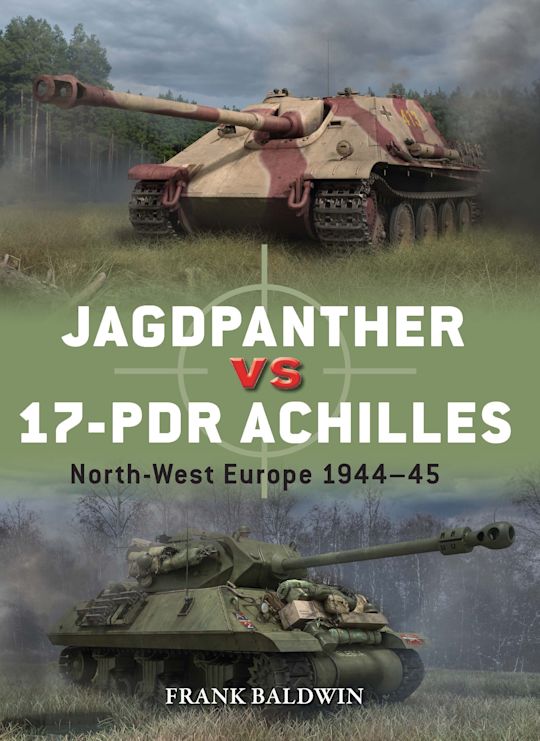Jagdpanther Vs 17-PDR Achilles
Usually shipped within 24 hours
UK deliveries from £5.95
Delivery & Returns
Delivery & Returns
We use the Royal Mail, DHL Express or UPS for our customers. For UK addresses, deliveries under 10kg are a standard £4.95 via Royal Mail Tracked 48 Service. For orders over 10kg and overseas customers, postage is calculated for you at checkout once you have entered your postal address. This price, does not include any potential custom charges that may apply, depending on the product or destination, as every country has very different import duties / taxes. Online exclusive products (such as trainers) will be delivered to you directly from the printer, separate from other items in your order, but your postage fee covers ALL items in your order.
If you are unhappy with your purchase, please email shop@tankmuseum.org within fourteen (14) working days of receiving your goods, and return it to us at the address below, in its original condition, unopened (with any seals and shrink-wrap intact) and we will issue you a full refund or replace it. Goods must be returned at your own cost. If the item is faulty, you do not need to return it, we will send you a replacement free of charge.
Description
Description
This is the story of the 17-pdr Achilles and the Jagdpanther, two formidable tracked anti-tank guns that clashed in North-West Europe during 1944–45.
Both mounting their country's most effective anti-tank ordnance on a tracked chassis, the 17-pdr Achilles and the Jagdpanther were arguably the best self-propelled anti-tank guns used by the British, Canadian and German forces that fought in North-West Europe during 1944–45. Featuring specially commissioned artwork and carefully chosen photographs, this is the story of the two types' development, combat use and legacy in the closing stages of World War II in North-West Europe.
Based upon the mobile, lightly armoured M10 design originally developed for the US Army, the Achilles had its main armament, the 17-pounder QF anti-tank gun, mounted in a fully revolving turret. Conversely, the low-profile, heavily armoured Jagdpanther had its formidable 8.8cm PaK 43 cannon mounted in a fixed casemate.
Both crewed by artillerymen rather than tankers, the Achilles and the Jagdpanther were anti-tank guns, not tanks or assault guns; their main purpose was to knock out enemy tanks, not to engage infantry or lead an assault or pursuit. Sometimes they faced each other, notably in the Reichswald fighting of February 1945. Fully illustrated, this work tells the story of their development and tactical use as well as what happened when these two very different designs met in combat.
![Jagdpanther Vs 17-PDR Achilles Book [variant_option4]](http://tankmuseumshop.org/cdn/shop/files/9781472862716.jpg?v=1749821481&width=1214)

![Jagdpanther Vs 17-PDR Achilles Book [variant_option4]](http://tankmuseumshop.org/cdn/shop/files/9781472862716.jpg?v=1749821481&width=88)
![Tank Museum Playing Cards Game [variant_option4]](http://tankmuseumshop.org/cdn/shop/files/ProductShoot_10_10_2025035.jpg?v=1760358498&width=176)
![Tank Museum Wrapping Paper - Two sheet pack Wrapping Paper [variant_option4]](http://tankmuseumshop.org/cdn/shop/products/Wrapp_Paper_All.jpg?v=1748337915&width=176)
![Jagdpanther Vs 17-PDR Achilles Book [variant_option4]](http://tankmuseumshop.org/cdn/shop/files/9781472862716.jpg?v=1749821481&width=640)



